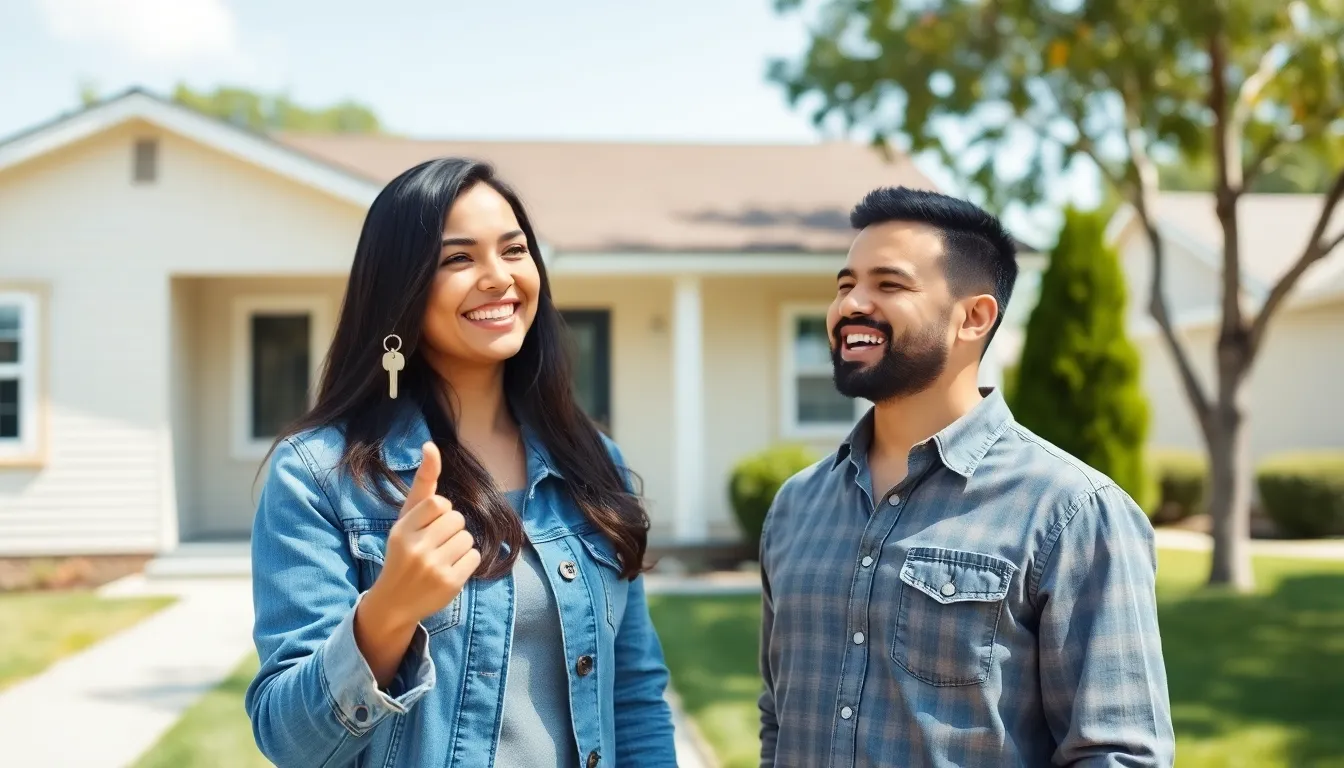Buying a home is a big deal, and understanding the ins and outs of a down payment can feel like learning a new language—especially when that language is Spanish! Whether it’s “pago inicial” or “depósito,” getting a grip on these terms can save a lot of confusion and maybe even a few bucks.
Imagine navigating the world of real estate with confidence, impressing your friends with your newfound vocabulary while sealing the deal on your dream home. With the right knowledge, the process doesn’t have to be daunting. In fact, it can be downright fun! So let’s dive into the essentials of down payments en español and turn that home-buying journey into a smooth ride. After all, who doesn’t want to be the savvy buyer who speaks the language of real estate?
Table of Contents
ToggleUnderstanding Down Payments
Down payments represent a crucial element in the home-buying process. A down payment is a percentage of the home’s purchase price that buyers pay upfront. Typically, it ranges from 3% to 20% or more of the total cost, depending on the type of mortgage and the lender’s requirements. Lenders often view higher down payments as an indicator of financial stability.
Calculating the down payment involves understanding the home’s price. For instance, purchasing a $300,000 home with a 20% down payment requires $60,000 upfront. Different loans have varying down payment expectations. Conventional loans generally ask for at least 5% down, whereas FHA loans may allow as little as 3.5%.
Exploring the impact of down payments on monthly payments is essential. Larger down payments lead to smaller mortgage amounts, resulting in lower monthly payments. Consequently, buyers can allocate funds more efficiently.
Navigating the world of down payments also involves examining additional costs. These include closing costs, which can range from 2% to 5% of the home’s price. Early budgeting for these expenses increases financial readiness.
Understanding the terminology can ease the process of buying a home. Terms like earnest money, which is a deposit made to demonstrate seriousness in an offer, often create confusion. Being well-versed in these key concepts enhances buyer confidence and decision-making.
Investing time in learning about down payments and related vocabulary ultimately empowers buyers. It encourages informed choices and promotes a smoother home-buying experience.
Down Payment en Español: Definition

Down payment refers to an initial payment made when purchasing a home. Understanding this term in Spanish, known as “pago inicial” or “anticipo,” aids in navigating the complex real estate landscape.
Importance of Down Payments
Down payments hold significant weight in home financing. They typically range from 3% to 20% or more of the purchase price. Larger down payments often communicate financial security to lenders. With a higher down payment, a buyer may secure better interest rates, reducing overall loan costs. Additionally, a substantial initial investment can lower monthly mortgage payments.
Examples of Down Payments in Spanish Context
Examples clarify how down payments function in Spanish-speaking markets. A buyer might save $15,000 for a $150,000 home, representing a 10% down payment. In another case, a buyer interested in a $200,000 home may opt for a 5% down payment, totaling $10,000. These figures illustrate how down payments impact affordability and financial planning. Understanding these examples enables Spanish-speaking buyers to make informed decisions during their home purchases.
Types of Down Payments
Understanding the various types of down payments is essential for making informed decisions in the home-buying process. This section explores two primary categories: fixed and variable down payments, along with common percentages.
Fixed vs. Variable Down Payments
Fixed down payments require a consistent percentage of the home’s purchase price. Many buyers opt for this route since it simplifies budgeting and planning. Conversely, variable down payments fluctuate based on the loan type or buyer’s financial situation. Such variability often appeals to first-time buyers who may rely on lower initial amounts. A clear distinction lies in predictability versus flexibility, guiding buyers in choosing what aligns best with their financial goals.
Common Down Payment Percentages
Common percentages typically range from 3% to 20%. A 3% down payment often suits first-time homebuyers, facilitating entry into the market with lower upfront costs. A 20% down payment, on the other hand, perceives as standard for conventional loans, signaling financial stability to lenders. Buyers benefit from reduced monthly payments and potentially better interest rates with higher down payments. Understanding these percentages helps buyers create a comprehensive budget and make strategic financial choices during the home-buying journey.
Common Misconceptions About Down Payments
Confusion often surrounds the concept of down payments. One common misconception implies that a 20% down payment is mandatory for all home purchases. Many lenders, however, accept lower down payments, with options as low as 3% available, especially for first-time buyers.
Another misconception suggests that a larger down payment guarantees loan approval. Loan approval depends on multiple factors, including credit score, income stability, and overall financial health. Buyers should consider all aspects of their financial situation rather than solely focusing on down payment size.
Some believe a down payment impacts only monthly payments. In reality, a down payment affects interest rates and loan terms as well. Lenders view higher down payments as indicators of reduced risk and may offer better rates for borrowers who can afford to pay more upfront.
Many assume that once a down payment is made, additional costs disappear. Closing costs, inspections, and insurance often accompany any transaction. Understanding these extra expenses is crucial for comprehensive financial planning.
Misconceptions also extend to the belief that saving for a down payment takes years. Various assistance programs exist to help buyers reduce the time required to accumulate funds. Researching available options can reveal grants or loans designed to assist potential homeowners.
Moreover, some individuals think all down payments are created equal. Different loan types may influence down payment requirements, from conventional loans to government-backed options. Buyers should examine their specific situations and see what options best fit their needs.
Understanding these misconceptions helps clarify the down payment process, leading to more informed decisions. With accurate information, buyers navigate the real estate market with confidence and gain a better grasp on their financial future.
Understanding down payments in Spanish is essential for navigating the home-buying process with confidence. By familiarizing oneself with terms like “pago inicial” and “anticipo,” buyers can make informed decisions and avoid common pitfalls.
With knowledge of down payment percentages and their impact on mortgage rates, buyers can better plan their finances. This empowerment not only leads to smarter choices but also enhances the overall experience of purchasing a home.
Investing time in learning about down payments ultimately sets the foundation for a successful journey in real estate.





